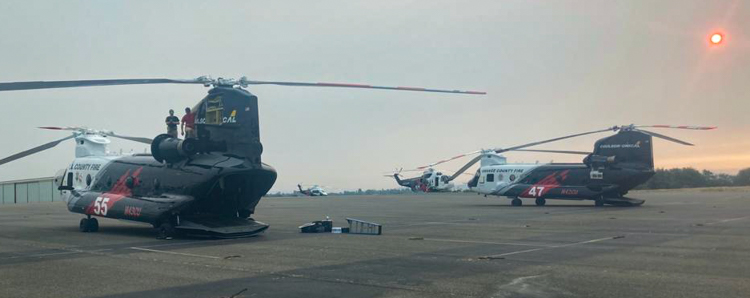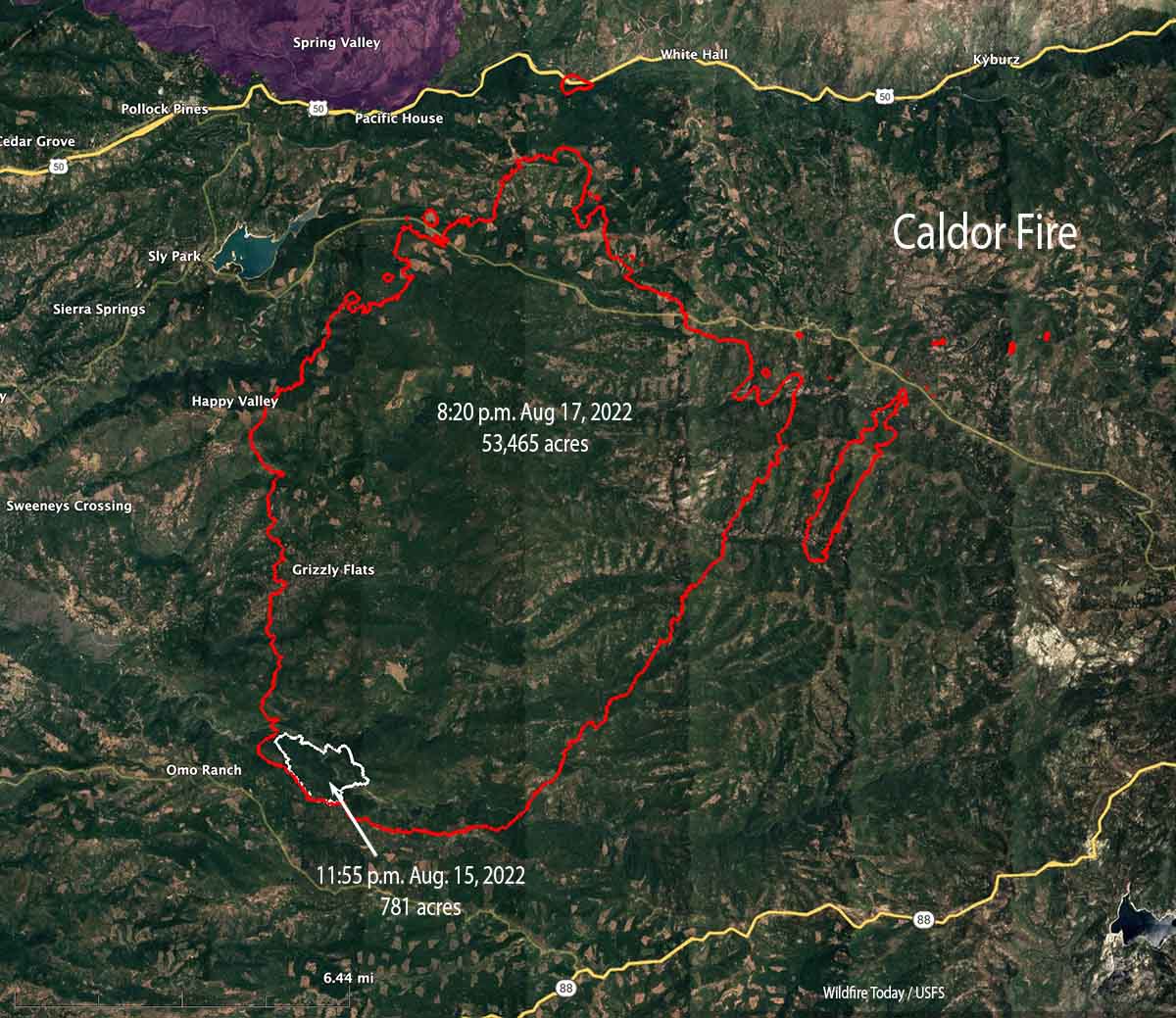Updated at 8:20 p.m. PDT Aug. 19, 2021
At 7 p.m. local time CAL FIRE released an update on the Dixie Fire. The acreage figure was about 22,000 higher than the number from 12 hours earlier, and now stands at 699,666 acres.
At least 659 residences have been documented as destroyed and 137 commercial buildings.
(To see all articles on Wildfire Today about the Dixie Fire, including the most recent, click HERE.)
The fire is being managed by two Incident Management Teams, one on the west side and the other on the east side. In CAL FIRE’s twice daily updates the “Current Situation” section is broken down into the West and East Zones. After closely reading them for a week, it became obvious that they are written by two different people with different views on what information should be included. Below are their updates from today at 7 p.m. These are typical:
“Dixie Fire West Zone: Firefighters continue to build and bolster containment lines on the Dixie Fire. Fire remained active under northeast winds, with spotting and torching contributing to fire growth. Smoke from other fires nearby did limit activity in some places, but not enough to prevent additional growth. Fuel moistures are historically low which is contributing to the critical fire behavior. There are many considerations before allowing an area to be repopulated. A methodical, multi-pronged process of inspection and evaluation must be conducted to ensure the health, safety and welfare of all the residents affected. This process includes guaranteeing roads are safe for travel and basic utilities to infrastructure is secured. Damage assessment is ongoing, and the number of damaged and destroyed structures may change as teams are able to access the fire area safely. Please see below for information affecting your area.”
“Dixie Fire East Zone: West Zone and East Zone crews, equipment, and aircraft have maintained aggressive engagement on the portion of the fire near Janesville. Along Honey Lake, the northern edge near fruit grower’s road has remained in its current footprint due to the continued northeasterly winds. Fire line was constructed on the south end from Highway 395 to the Walker fire scar. In an additional priority area, rotary aircraft supported crews in the Genesee Valley this morning when they were able to fly. After aerial retardant application, the spot fire remains at approximately the same footprint of 30 to 40 acres and firefighters are constructing and reinforcing contingency lines to the south. The fire on the north side of Beckwourth Genesee Road is currently backing down the middle slopes and crews continue to construct lines to mitigate impacts to structures in the Genesee Valley.”
Below is the map showing the boundary between the two zones, revised August 16.
Next, is the satellite photo showing smoke from fires in Washington, Oregon, and California.

10:46 a.m. PDT August 19, 2021

The spot fire that started five miles east of the Dixie Fire near Highway 395 has grown to about 20,000 acres. It crossed the highway in at least two places but firefighters were able to limit the spread east of the roadway. Approximately five miles of the eastern side of the fire is now alongside Highway 395 west of Honey Lake between Janesville and Milford.
The blaze is still very active in Wilcox Valley and on the west side of the 2019 Walker Fire.
Thursday morning the Incident Management Team reported that the fire had burned 678,000 acres.

Westwood has still been spared. Seven miles east of the community the fire has approached Highway 36 but has not grown east past the 2016 Willard Fire. It is six miles west of Susanville.
The northwest area remains very active and continues to march through Lassen Volcanic National Park. I estimate that about 40 percent of the 106,452-acre park has has burned.
The slopover south of Highway 36 east of Mill Creek was very active Wednesday and has burned approximately 2,000 acres. This is 13 air miles west of Chester.
The weather forecast predicts dry, breezy conditions for the next several days. Friday afternoon through Sunday should bring strong winds out of the southwest.













